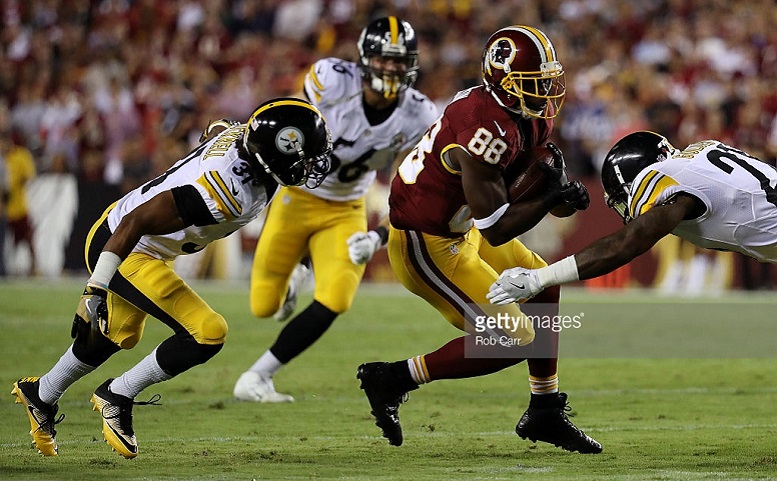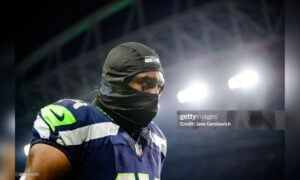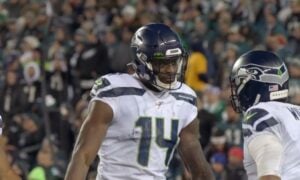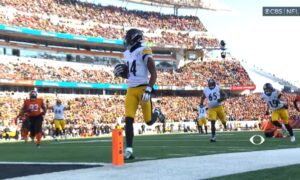The Washington Redskins announced they will abandon their nickname and logo yesterday, July 13, 2020. One of the franchise founders, George Preston Marshall named the franchise the Redskins one year after the team entered the league as the Boston Braves.
The Braves Were First
This original Boston football franchise took the name Braves from the National League baseball team that now resides in Atlanta. The baseball team was founded in 1871 and went by several nicknames including the Red Stockings, Doves and Rustlers (The American League franchise adopted the name Red Sox). In 1912, team owner John Ward named the club the Braves as a nod to James Gaffney who was a “sachem” or leader of New York’s Tammany Hall. A sachem is a term used for chief by the Algonquian, Northeastern American Indian tribes.
In December 1911, Ward stated, “As considerable has been said about a new name for the club, I would like to suggest ‘Boston Braves.’ You see, James E. Gaffney is one of the grand sachems of Tammany, in New York, and is known as one of the ‘braves.’ Therefore, ‘Boston Braves’ would have the true fighting ring that the fans would take to.”
From Braves to Redskins
Marshall took control of the Boston Football Braves and announced the new name Redskins in July 1933 just before the NFL’s annual owner’s meeting. A Boston Globe article at the time said the new name was appropriate since Marshall and coach “Lone Star” Dietz recruited several American Indian players. Also, the article mentioned that their home field, National League Park (Braves Field) was called the “wigwam.”
The 1933 Boston Redskins list four of 28 players on that season’s roster who played for the Haskell Indian Institute. It still exists today as the Haskell Indian Nations University in Lawrence, Kansas. The “Fighting Indians” as they are currently nicknamed have placed 19 players in the NFL. Unfortunately, the school dropped football in 2015.
The Actual American Indians
Center Orien Crow started 14 of 22 games played in his two seasons with Boston. Crow became a Commissioner of the Bureau of Indian Affairs. Linebacker Lawrence Waukechon Johnson played eight seasons in the NFL. The first three years with Boston and his final year 1944 with the Washington Redskins. Johnson was a pro bowler with the New York Giants in 1938. End David Ward lasted just one game with Boston. Halfback Louis “Rabbit” Weller played seven games with Boston in 1933. A multi-sport talent, Rabbit is a charter inductee of the American Indian Athletic Hall of Fame.
From One Star to Lone Star
William “Lone Star” Dietz coached the Boston team in 1933-34. He claimed Indian ancestry, but his heritage has been disputed as early as 1916. A federal investigation alleged that he assumed the identity of James One Star who disappeared decades before. Dietz did attend and play football for Chilocco Indian Agricultural School and Carlisle Indian Industrial School with famous teammate Jim Thorpe. Dietz changed his moniker from One Star to Lone Star which he used until his death in 1964.
That is some backstory on the Washington Redskins name. We will see if Dan Snyder names them the Warriors or some other name not considered disparaging to American Indians. As an average Steelers fan, that got me thinking about the nickname origins of the AFC North teams.
Cincinnati Bengals
The current team is the second football franchise to use the Bengal nickname in Cincinnati. The original Bengals began play in 1937 as part of the short-lived American Football League that folded after just two years of operation. The Bengals continued play as an independent and then joined a new American Football League that suspended operations in February 1942 due to World War Two.
In October 1967, the organization held a contest to name the expansion franchise for the 1968 season. The most popular name suggested by fans was the Buckeyes. However, the owners rejected the fans choice to avoid confusion with the Ohio State University Buckeyes. Instead, part owner, general manager and coach Paul Brown announced that the organization selected the name Bengals as a link to the previous team that played in Cincinnati from 1937-41. Brown stated, “If we can pick up a thread of tradition, we think it’s good. We feel at home with the name Bengals.”
Cleveland Browns
The Cleveland Browns joined the All-American Football Conference in 1946. For a very brief time, Cleveland had two pro football teams: the upstart Browns in the AAFC and the Cleveland Rams in the older National Football League. The Rams moved to Los Angeles once the Browns began play in 1946. Legendary Paul Brown was already a successful coach at Ohio powerhouse Massillon High School and at Ohio State University. Newspaper reports referred to the new franchise as the Browns after the famous coach as early as February 1945, over a year before they started play. This is the franchise that Art Modell moved to Baltimore in 1996 though the NFL awarded its history and records to the expansion team now called the Cleveland Browns in 1999.
Baltimore Ravens
The Baltimore Ravens entered the NFL as an “expansion” team in 1996. The reality is that the entire Cleveland Browns organization including players, coaches and administrative staff transferred enmasse from Cleveland to Baltimore. They left behind their history and records in Cleveland for a future team as a parting gift and agreement with the NFL commissioner.
The Baltimore owners held a fan contest shortly after announcing the transfer of the team. The Modell’s had inquired about the Colts name, but the Indianapolis organization wanted to keep it. The Ravens name refers to a poem by longtime Baltimore resident Edgar Allan Poe called The Raven. It also kept the bird theme with the Baltimore Orioles of MLB.
Pittsburgh Steelers
As most Steelers fans know. Team founder Art Rooney originally named the Pittsburgh Steelers the Pirates after the baseball team. A common marketing tactic in a sport competing with college football for fans interest. Baseball was America’s pastime at the time, and it made sense to ride the more popular sport’s coattails.
In March 1940, Pittsburgh newspapers trumpeted the new name following a contest to rename the team. There were 21 submissions that included the Steelers as a suggested name for the Black and Gold. All 21 are listed in the article linked to here. They received season tickets for the 1940 season, the Steelers eighth year in the NFL. Ironically, Art Rooney who sponsored the renaming contest would sell the franchise the next year but that is another story.
Your Song Selection
I always like to include a song. Here is What’s My Name by Rihanna and Drake.








